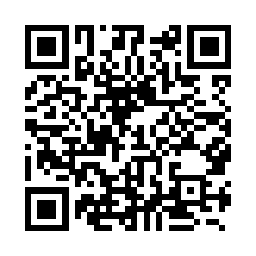
MAC address

A media access control address (MAC address) of a device is a unique identifier assigned to a network interface controller (NIC). For communications within a network segment, it is used as a network address for most IEEE 802 network technologies, including Ethernet, Wi-Fi, and Bluetooth. Within the Open Systems Interconnection (OSI) model, MAC addresses are used in the medium access control protocol sublayer of the data link layer. As typically represented, MAC addresses are recognizable as six groups of two hexadecimal digits, separated by hyphens, colons, or no separator (see Notational conventions below). A media access control address (MAC address) of a device is a unique identifier assigned to a network interface controller (NIC). For communications within a network segment, it is used as a network address for most IEEE 802 network technologies, including Ethernet, Wi-Fi, and Bluetooth. Within the Open Systems Interconnection (OSI) model, MAC addresses are used in the medium access control protocol sublayer of the data link layer. As typically represented, MAC addresses are recognizable as six groups of two hexadecimal digits, separated by hyphens, colons, or no separator (see Notational conventions below). A MAC address may be referred to as the burned-in address, and is also known as an Ethernet hardware address, hardware address, and physical address (not to be confused with a memory physical address). A network node with multiple NICs must have a unique MAC address for each. Sophisticated network equipment such as a multilayer switch or router may require one or more permanently assigned MAC addresses. MAC addresses are most often assigned by the manufacturer of network interface cards. Each is stored in hardware, such as the card's read-only memory or by a firmware mechanism. A MAC address typically includes the manufacturer's organizationally unique identifier (OUI). MAC addresses are formed according to the principles of two numbering spaces based on Extended Unique Identifiers (EUI) managed by the Institute of Electrical and Electronics Engineers (IEEE): EUI-48, which replaces the obsolete term MAC-48, and EUI-64. The original IEEE 802 MAC address comes from the original Xerox Network Systems Ethernet addressing scheme. This 48-bit address space contains potentially 248 or 281,474,976,710,656 possible MAC addresses. The IEEE manages allocation of MAC addresses, originally known as MAC-48 and which it now refers to as EUI-48 identifiers. The IEEE has a target lifetime of 100 years (until 2080) for applications using EUI-48 space and restricts applications accordingly. The IEEE encourages adoption of the more plentiful EUI-64 for non-Ethernet applications. The distinction between EUI-48 and MAC-48 identifiers is in name and application only. MAC-48 was used to address hardware interfaces within existing 802-based networking applications; EUI-48 is now used for 802-based networking and is also used to identify other devices and software, for example Bluetooth. The IEEE now considers MAC-48 to be an obsolete term. EUI-48 is now used in all cases. In addition, the EUI-64 numbering system originally encompassed both MAC-48 and EUI-48 identifiers by a simple translation mechanism. These translations have since been deprecated. An Individual Address Block (IAB) is an inactive registry activity which has been replaced by the MA-S (MA-S was previously named OUI-36) registry product as of January 1, 2014. The IAB uses an OUI from MA-L (MA-L registry was previously named OUI registry, the term OUI is still in use, but not for calling a registry) belonging to the IEEE Registration Authority, concatenated with 12 additional IEEE-provided bits (for a total of 36 bits), leaving only 12 bits for the IAB owner to assign to their (up to 4096) individual devices. An IAB is ideal for organizations requiring not more than 4096 unique 48-bit numbers (EUI-48). Unlike an OUI, which allows the assignee to assign values in various different number spaces (for example, EUI-48, EUI-64, and the various context-dependent identifier number spaces), the Individual Address Block could only be used to assign EUI-48 identifiers. All other potential uses based on the OUI from which the IABs are allocated are reserved, and remain the property of the IEEE Registration Authority. It should also be noted that, between 2007 and September 2012, the OUI value 00:50:C2 was used for IAB assignments. After September 2012, the value 40:D8:55 was used. The owners of an already assigned IAB may continue to use the assignment. There is another registry which is called MA-M (MAC Addresses - Medium). The MA-M assignment block provides both 220 EUI-48 identifiers and 236 EUI-64 identifiers (that means first 28 bits are IEEE assigned bits). The first 24-bits of the assigned MA-M block are an OUI assigned to IEEE that will not be reassigned.


